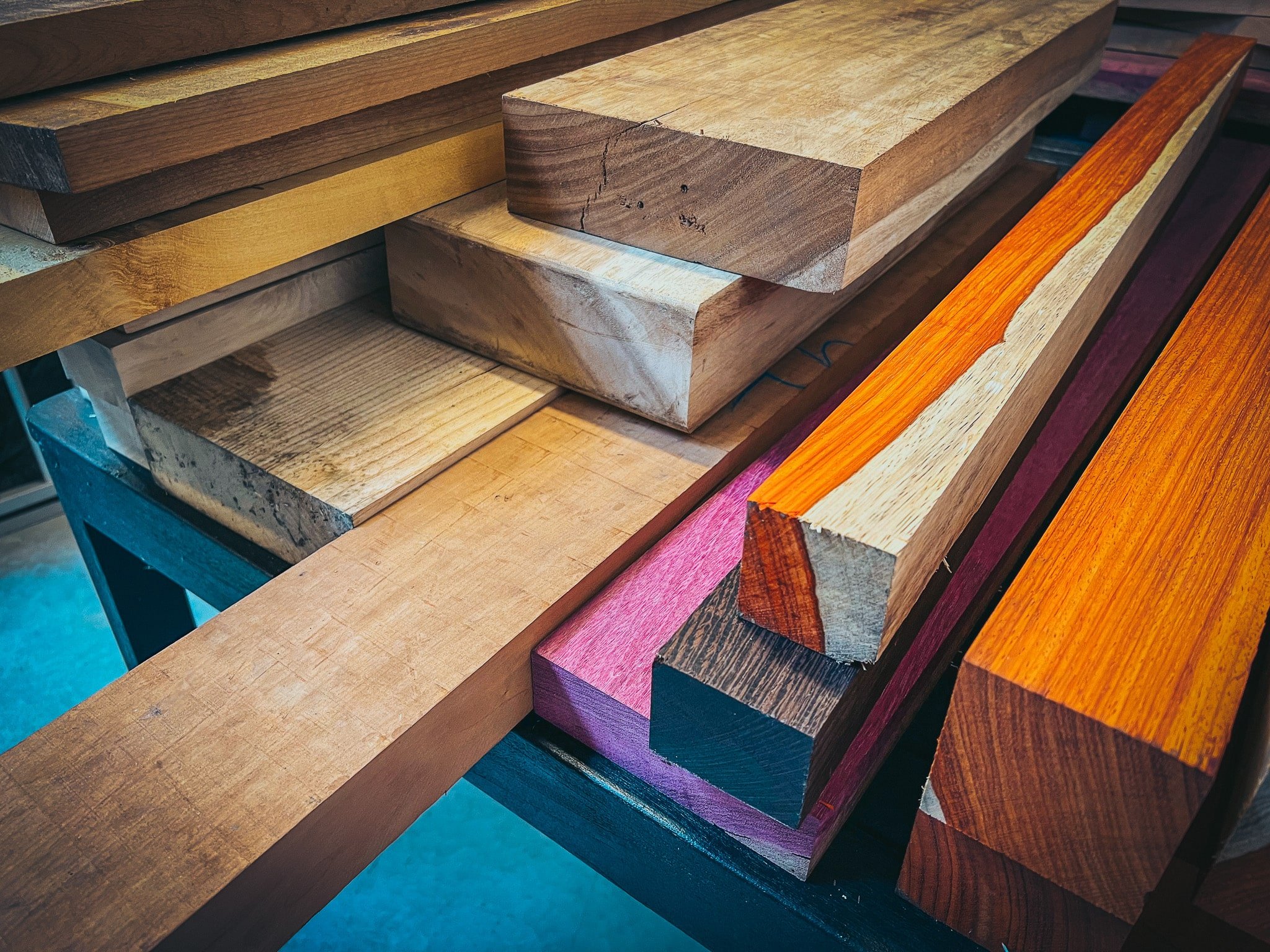Best Woods for Cutting Boards
Only the best hardwoods are used for plllank cutting boards. Here wear resistance and sturdiness are important characteristics. Often a base of cherry, walnut, plane, ash, beech or amber is used. These form a good durable cutting base and are supplemented with distinct accent woods such as padauk (red), wenge (black), pau amarelo (yellow), purpleheart (purple) and hornbeam. The final product is a unique, durable and quality cutting board for life.
All hardwoods used by plllank have the quality and properties to be applied in cutting boards. Of course, any basic wood species can be an accent wood species and vice versa. However, a distinction is still made on the one hand aesthetically and on the other economically.
Basic Woods
The basic woods often have a neutral, typical light brown / light yellow / light pink wood color. Here the exception is American walnut which has a deep brown color when finished. In addition to hue, these can also be distinguished in their grain pattern. For example, plane has very pronounced "mirrors" that provide a typical pattern in the wood.

Walnut
Walnut(Juglans regia) or walnut, walnut has an excellent durability rating. It is light grayish brown to warm dark brown, with or without attractive blackish markings. American walnut is warm dark brown, while the color differences are less than in European walnut. The color of European walnut strongly depends on its origin.
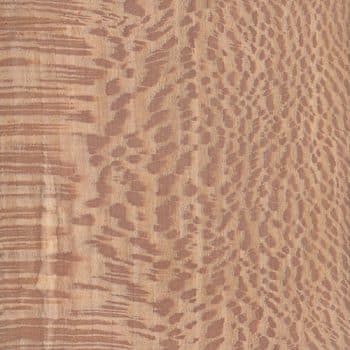
plane
plane (Platanus acerifolia) has strong, tough and solid wood. The heartwood of plane trees is light brown and the broad sapwood is white to slightly reddish in color. Wide, high rays that are darker than the rest of the wood cause typical markings on quarter-sawn wood for plane. The English name "lacewood" refers exclusively to quarter-sawn sycamore.
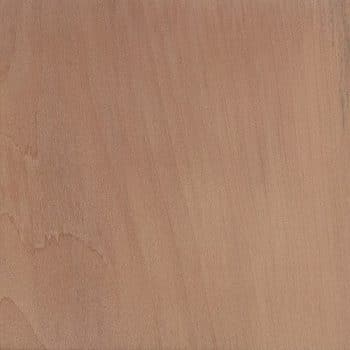
Peer
Pear(Pyrus communis L.) has very many varieties and is cultivated all over the world. There is almost no distinction between heartwood and sapwood. The color is yellowish to pinkish brown. Exposed to light, it takes on a warm hue. The heart of old logs is sometimes discolored dark chocolate brown. The wood shows very little markings. A very faint flame configuration can be observed on the stock face, while a very fine stripe pattern can be seen on the quarter face. Pear is a solid, strong, tough wood.

Maple
European maple(Acer pseudoplatanus) is an attractive clear wood species with a white to cream color that turns pale yellow when exposed to daylight. There is little or no color difference between heartwood and sapwood of maple. In general, the wood shows an even structure. Due to a rather sharp delimitation of the growth rings, a fine stripe pattern can usually be observed on the quarter face and a modest flame pattern on the dead face. Characteristic are the small mirrors on the quartered surface and the somewhat silky sheen. In older trees, a brownish core or dark brown streaking can occur.
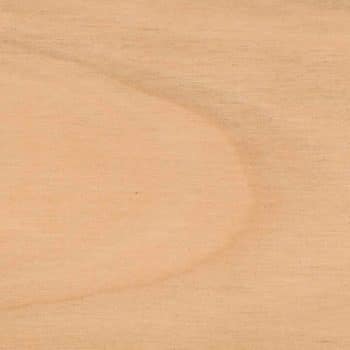
European cherry
European cherry wood(Prunus avium), often called "Cherry". The wood has a highly decorative yellow-brown, often slightly reddish-brown color. It sometimes has some veined heartwood that often shows green streakiness. It has an excellent durability rating. Occurs throughout the world: Europe, Asia Minor, southeastern Canada and the eastern heath of the United States. In Western Europe, it is planted and feral.

Es
The wood of ash(Fraxinus excelsior) has a color ranging from white to yellowish or light yellow-brown. Freshly sawn wood may additionally exhibit a pinkish hue. Exposed to light, bare ash becomes more yellowish in color over time. Due to the erratic course of the core, brown/white streaked or flamed (quartered or deadweight) wood can sometimes occur. This is often a very aesthetically desirable effect. Ash is known for its toughness and this is evident in the making of cutting boards. It is a very difficult wood to sand and must be sawn with care.
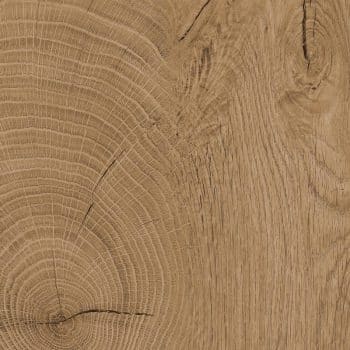
Oak
Oak(Quercus) heartwood has a yellow-brown to dark brown color and stands out clearly against the pale brown sapwood. Quarter sawn wood shows characteristic shiny mirrors, caused by the broad white rays that are clearly visible on the end-grain plane. The wood is ring-pored, resulting in a flame pattern on the dose plane. Structure and quality vary depending on growing conditions. Domestic oak tends to be harder, heavier and firmer, stronger but also coarser than imported oak.
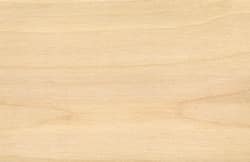
Birch
Although qualitative differences exist in birch(Betula pendula) with respect to size, tassels, texture, etc. depending on origin, birch is generally white to light brown in color. The black pits (marrow spots) often found in birch are caused by infestation of the cambium by a long-legged mosquito. The heartwood is sometimes and sometimes not very distinct.
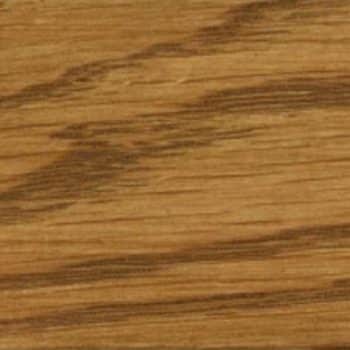
Amber
Amber(Liquidambar styraciflua L.) or also called satin nuts or sweet gum, is best known from the days of triangle and stitch carving in the 1920s and 1930s. The heartwood (red gum) occurs only in very old trees and is available in very limited quantities. The heartwood has a silky sheen and has a brown to reddish-brown color and somewhat resembles nuts. Amber is not botanically related to true nuts.

Elm
Elm or elm(Ulmus x hollandica Mill.) is a ring-pore wood species. Elm wood is solid, tough, fairly light and usually uniform in texture. Canadian elm or rock elm is heavier, harder, stronger and tougher than European elm. Japanese elm is similar to European elm, but is more uniform in color and has more luster. The heartwood of European elm is light brown to dull dark brown, sometimes with a greenish sheen. The sapwood is yellow-white. Of soft elm, the heartwood is light gray-brown to pink-brown, the broad sapwood gray-white to light brown. The heartwood of red elm is red-brown to dark brown with narrow gray-white to light brown sapwood. Due to Dutch elm disease (caused by a fungus that kills the tree after several years), European elm stock has declined dramatically, so elm wood is now rarely offered.

Flamed beech
Beech(Fagus sylvatica L.) has a regular and dense structure. The up to 4 mm high rays are usually clearly visible on the longitudinal surface. The heartwood is whitish to light brown, darkening to light yellow-brown. In beech, irregularly shaped red heartwood often occurs. The term faded represents being affected by fire. This gives a unique look and is perfectly food safe after processing.
Accent Woods
The accent woods are mainly distinguished by their special color. All plllank cutting boards are always made with natural wood without any artificial coloring or epoxy. Typically, these species are also very sturdy and wear-resistant. This makes them ideal for cutting boards. Due to their characteristics, these tend to be more expensive and are therefore mainly used as an accent.
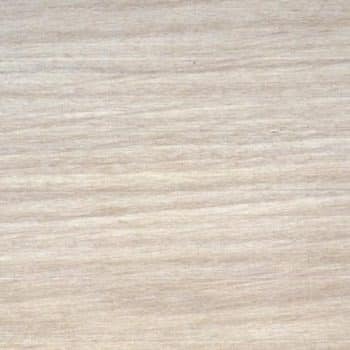
Hornbeam
The wood of hornbeams(Carpinus betulus L.) has a grayish-white color, with gray streaks and spots caused by the broad rays. There is no color difference between heartwood and sapwood. Hornbeam is very difficult to split which makes it very suitable for cutting boards. Nevertheless, it is rarely found in cutting boards.

Wenge
Wengé has many other names: awong (Cameroon), nongon, ngondou (Congo), anong (Guinea), ngon son-so (Gabon), mboto, bokonge, dikala-kala, tshikalakala, dikela, kiboto, monkonge, mundambi, wengé (Zaire), jambire, pangire (Mozambique), mgande, mpanga (Tanzania) and panga panga. So plenty of choice. Freshly sawn wenge has a light yellow-brown color. Exposed to light, the wood quickly turns dark brown. In wenge, the fibrous tissue has a black color and the parenchyma tissue a (light) brown color. Both tissues occur in alternating, approximately parallel strips. This creates a regular pattern of black and brown stripes on quarter sawn wood, while flat sawn wood is beautifully flamed brown-black. When wenge is exposed to direct sunlight for a long time, it becomes lighter in color again. The black wood then becomes dark brown and the brown areas yellow-brown. Wenge has a very good durability rating.

Purple Heart
Purpleheart(Peltogyne venosa), or amarante, violetwood, guarabu, pau roxo, roxinho (Brazil), tananeo (Colombia), has a very typical purple-blue color at its core. The color is difficult to maintain if not treated in time. A very tough wood that is difficult to sand. A very high quality and durable addition to the cutting board.

Padua
The heartwood of padauk (or padouk, padouck)(Pterocarpus soyauxii) is bright orangey red, also called coral red, hence the local name corail. When exposed to light, this hue quickly discolors to sallow reddish brown and, in the long run, to blackish brown. If the wood is treated promptly, the beautiful color is retained longer. The 100-200 mm wide sapwood is cream-colored with a sharp border. African padauk is an excellent, durable and stable type of wood.
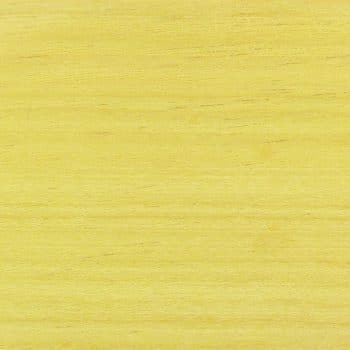
Pau amarelo
Pau amarelo(Euxylophora paraensis J. Huber) or also called pau setim, pau cetim, pequia setim amarello, has a very characteristic yellow color. Heartwood and sapwood are difficult to distinguish. The sapwood is yellow-white. The heartwood is fresh bright yellow, later darkening with a nice sheen. Sometimes also called "yellowheart". The texture is uniform with no markings which makes it an interesting addition to any cutting board. The wood has a large volumetric mass which makes it heavy and difficult to work with. The planed surface finishes very smooth and has a nice sheen.

Zebrano
Zebrano or "zebrawood"(Microberlinia brazzavillensis) is yellowish in color with dark brown veins running parallel to the tree axis. When the wood is quarter-sawn or cut, the familiar zebra-like stripe markings from which the wood gets its name appear. Dos sawn wood shows a very distinctive flame pattern. Because of its rather busy character, it is rather used as an accent. Belongs to the hardest woods with difficult machinability.
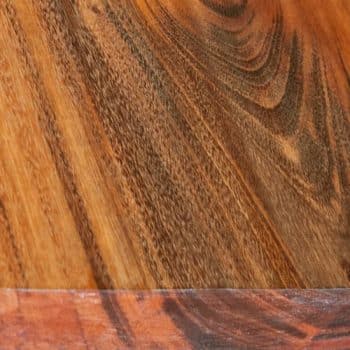
Tigerwood
In tigerwood(Meliaceae), the heartwood is yellow-brown to dark brown with usually a golden sheen, sometimes with dark streaks or veined (called tigerwood). The sapwood is grayish white to light beige, maximum 70 mm, average 50 mm wide. Almost always has unique and very exceptional markings in both the edge-grain and end-grain planes.
Order Today!
Convinced of the quality of a hardwood cutting board from plllank? Take a look in the webshop and discover the different wooden cutting boards available. If you do not immediately find what you are looking for, contact us and have one custom made.
If you would like more information on the different types of wood used in wooden cutting boards, or on any other subject, be sure to contact us.

